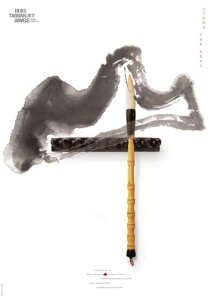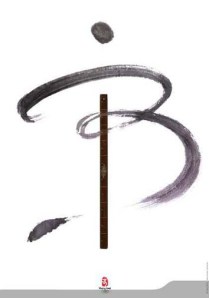Thinking about using Chinese brush as a media, I spent a bit of time to practice calligraphy on layout pads. My aim is not writing any Chinese letter but to get the nice brush stroke effects. After few times of testing (Fig. 1), I realized that timing and strength are the essential criteria to determine the strokes. The hardest part might be controlling ‘tail’ of a stroke because it requires certain angle to lift up the brush before ending.

Fig. 2. Inoue Takehiko, Vagabond, 2011. http://www.itplanning.co.jp/

Fig. 3. Inoue Takehiko, Vagabond, 2012. http://www.itplanning.co.jp/
This practice somehow reminds me a great Japanese manga artist — Takehiko Innoe. He has been indulging the essence of brush strokes with his distinctive art style. His works not only showcase unconventional story telling, but also a philosophical worldview. In his latest work Vagabond, he adopts Chinese brush and ink as media instead of traditional G-pen. His brush strokes manifest strength, speed, spirit, calmness, madness and sometimes sense of desolateness.

Fig. 4. Kan Tai Keung, Chinese Characters: Mountain, 1995. http://www.klandk.com

Fig. 4. Kan Tai Keung, Chinese Characters: Book, 1995. http://www.klandk.com
Kan Tai Keung is another master who employs the brush stroke in field of design. Being a pioneering graphic designer in Hong Kong and China mainland, he integrates western design principles with the Chinese cultural essences. His brush strokes often blend in with certain graphic elements and articulates a strong sense of Chinese culture.

